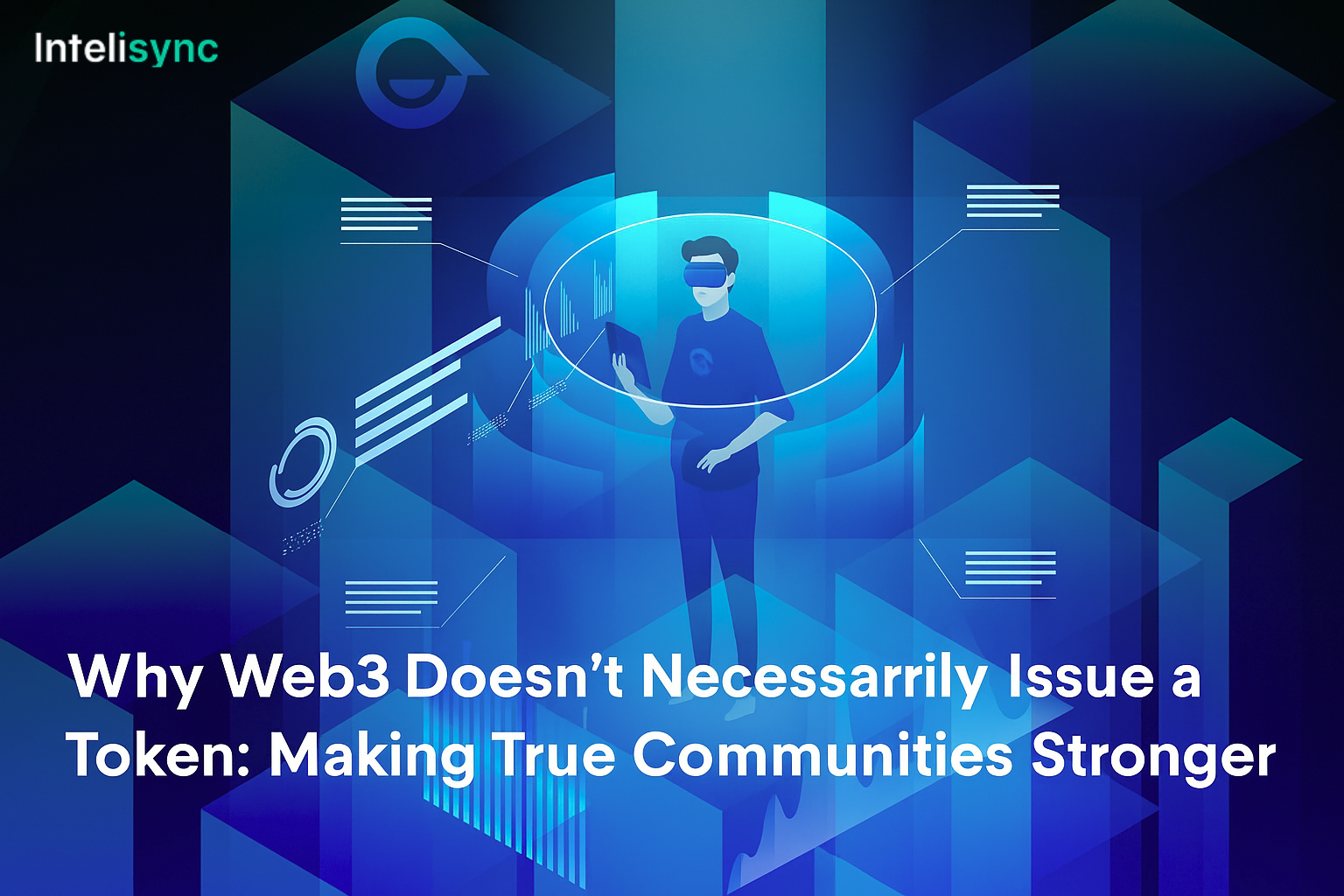Introduction
The greatest obstacle for blockchain networks has always been scalability. Although Ethereum, Solana and BNB Chain have stretched the limits of dApps, the advent of modular blockchains is changing how developers consider scale.
Rather than attempting to do everything execution, consensus, settlement and data availability on one chain, modular blockchains divide these functions into various specialized layers. This design paves the way for the kind of next-generation Web3 apps that can scale to millions of users without sacrificing security or decentralization.
This blog is based on why modular blockchains are the future of Web3, and what makes them that, the need they satisfy, the main use cases and examples, and how companies like Intelisync The blog is based on why modular blockchains are the future of Web3, and what makes them that, the need they satisfy, the main use cases and examples, and how companies like Intelisync utili. ai are enabling projects to supplement exponential advances in modular architectures.
The Scalability Trilemma in Blockchain
- The well-known scalability trilemma underscores that it is very difficult to have all properties such as security, decentralization and scalability at the same time.
- The monolithic blockchain such as Ethereum, processes all tasks in a single layer. Safe, and decentralized as they may be, these networks are often also expensive and slow.
- Layer 1 alternatives such as Solana boost throughput but may sacrifice some level of decentralization.
- Modular blockchains solve this problem by separating concerns.
What Are Modular Blockchains?
Modular blockchain A modular blockchain redefines the traditional responsibilities of a blockchain into layers:
Execution Layer
Facilitates transactions and administers execution of smart contract. Example: Rollups on Ethereum.
Consensus Layer
Ensures consensus on the sequence of transactions. Example: Ethereum Mainnet.
Settlement Layer
Enables rollups or sidechains with dispute resolution and finality.
Data Availability Layer
Provides for the availability of transaction data. Example: Celestia.
This allows developers to experiment with combinations of layers to maximize the performance for their use case.
Advantages of Modular Blockchains for Web3 Apps
Scalability Without Sacrificing Security
With the caveat of having execution handled in rollups while maintaining consensus security on Ethereum, modular blockchains scale to much higher throughputs without the danger of centralization.
Cost Efficiency
Users are saving on gas fees due to execution moving to gas efficient rollups and getting the same security level as Ethereum.
Flexibility for Developers
Execution environments (eg, EVM compatible, WASM like, so on) can be done by teams without requiring to build consensus.
Ecosystem Interoperability
Modular architecture facilitates cross-chain communication, which is essential for DeFi, games, metaverse apps.
Examples of Modular Blockchain Solutions
Celestia
A leading data availability layer that lets rollups and other fresh blockchains shift their data storage off chain while keeping consensys securely on chain.
EigenLayer
Brings restaking to Ethereum, giving developers the ability to construct services on Ethereum’s consensus.
zk-Rollups & Optimistic Rollups
Execution layers that dock into Ethereum for settlement and security.
Fuel Network
A performance-optimized execution layer on Chinese Ethereum, and a security-optimized execution layer on Ethereum.
Applications of Modular Blockchains in Web3 Apps
- DeFi Platforms: Low fee high-throughput DEX and lending protocols.
- NFT Marketplaces:NFT Marketplaces: Scale minting and trading without clogging up Ethereum.
- Web3 Gaming: Instant payments and micro-payments.
- Enterprise Blockchain Solutions: Compliance-levels, custom execution environments.
Modular Blockchain Development with Intelisync, and What It Does With Blockchain
At Intelisync. ai, we assist Web3 startups, corporates and investors in adopting modular blockchains by:
- Custom Rollup Development: Custom development of zk-rollups and optimistic rollups for specific projects.
- Integration to Celestia & EigenLayer: Take advantage of next gen modular ecosystems.
- Scalable dApp Architecture: Creating apps that can ready for mass adoption.
- Web3 Consulting & Security Audits: Guarantee projects have implemented the correct modular approach.
Regardless if you are building a DeFi protocol, NFT marketplace, or crosschain bridge Intelisync will auto-scale while maintaining security.
The Future of Modular Blockchains in Web3
- Rollups Go Mainstream: Ethereum is the “settle chain” for lots and lots of “shard chains”(serializers).
- Data Availability Wars: The race to another Celestia, Avail or EigenDA will begin.
- Hybrid Architectures: Companies will begin to use permissioned modulized layers connected with public ones.
AI + Modula Blockchains: AI-based optimizations including rollups, and DA layers providing increased efficiency.
Conclusion
Modular blockchains are going to revolutionise the Web3 stacks. With execution, consensus, settlement, and dataavailability distinct, they enabled the development of scalable, secure, and interoperable dApps.
The faster adoption becomes normal, the more critical for a project shall become its modularity to adapt in the multi-chain future. And with partners like Intelisync. ai and Web3 founders are able to deploy apps they trust to be scalable, future-proofed.







